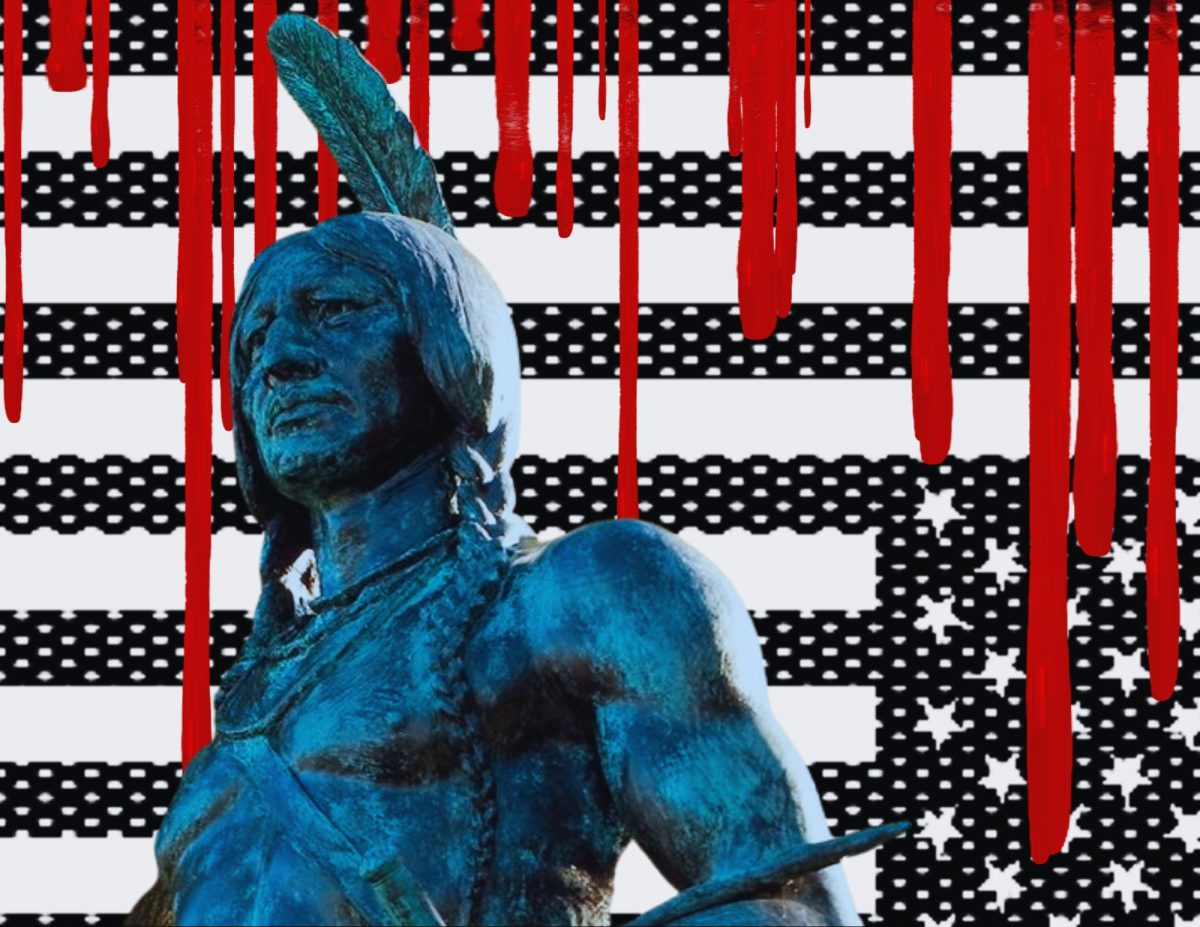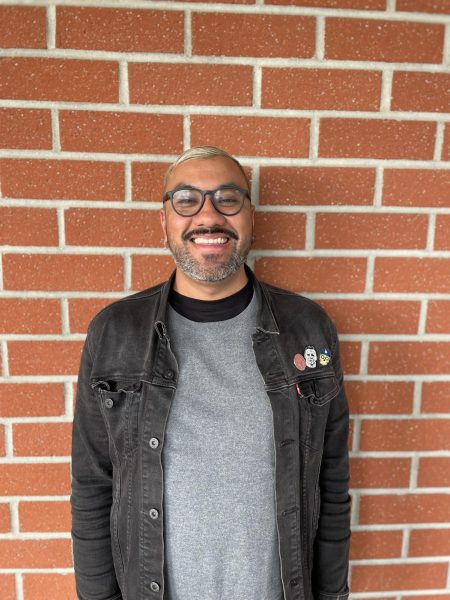American history has misrepresented the origin and historical accounts of the first Thanksgiving for centuries.
The narrative ingrained in American folklore and mythology is problematic to many Native Americans who view the holiday as nothing more than a way to sanitize America’s past. Many like Native American history professor Raúl Chávez share this sentiment and believe the truth about Thanksgiving to be glorified undeservingly.
“[Thanksgiving] is the first attempt by Americans to disguise their genocide,” Chávez said.
Americans have been taught their version of revisionist history since the days of elementary.
November 1621, after hunting a deer, a group of Wampanoag hunters led by Sachem Ousamequin, began their return to the village as they were alarmed by the distant cracks of gunfire by the Pilgrim plantation of Plymouth.
Fearing the Pilgrims were in danger, the Natives rushed to the settlement only to find they were practicing their sharpshooting. For what purpose? They did not know.
Upon their arrival, the Pilgrims invited the Natives to join them in the feast they were preparing for, which may have consisted of beans, corn, fish, fowl and the deer the Natives had just hunted.
Though they were invited peacefully, some Natives speculated the meal would be segregated with Pilgrims and Natives eating separately.
The celebration culminated over three days. Though it was yet to be called by the title popularly known and accepted today, this meal is the basis of the cultural myth of the Thanksgiving holiday.
In response to the pitiful ratio and bias of documentation of the first Thanksgiving, American history professor Harlan Hoffman highlighted the egregious one-sided accounts given as the singular and sole heresy in history. “When there are many witnesses to an event, but only one side gets to tell its story, that side of the story naturally becomes the accepted version of what happened,” Hoffman said.
American history professor and author of “This is Their Land: The Wampanoag Indians, Plymouth Colony, and the Troubled History of Thanksgiving,” David J. Silverman, like Hoffman and Chavez, called attention to the unaccounted history of the Thanksgiving massacres, stating in an interview the message behind the Thanksgiving myth:
In 1637, William Bradford, former Governor of Plymouth Colony, ironically to the Natives, declared Thanksgiving a day to celebrate, “the bloody victory, thanking God that the battle had been won.”
Bradford referred to the Pequot War where nearly 700 Pequot natives were slain by Pilgrims as a triumphant day to remember.
Subsequently, in 1862, a year before President Abraham Lincoln proclaimed Thanksgiving a national holiday, 38 Dakota men were hung and massacred in the largest mass execution on U.S. soil where the only convicted crimes were two rapes.
According to the USA Dakota War’s website, 392 prisoners were tried, 303 were sentenced to death, and 16 were given prison terms. The Mankato Hangings took place after an uprising of Dakota Natives “because of treaty violations and the failure of the U.S. government to provide food and supplies to the starving Indians,” Hoffman said.
Though Hoffman believes that our knowledge and understanding of Native Americans has “certainly improved,” in his words, he believes that it is “hard to quantify the damage caused by the original false narrative [of Thanksgiving].”
As a result of the violent history toward Native Americans and the efforts to hide it, Chávez responded, “I think for Native Americans to acknowledge the day, I think in some ways, can be traumatizing.”
Yet many Native Americans interpret Thanksgiving differently.
For some, it is a day of mourning while others see it as a day of Native resilience and survival; a day that recognizes their existence.
Yet for most, it is a day of remembrance; a day to honor and remember their ancestors who either endured or succumbed to the violence of American imperialism and to offer prayers in thanks to the efforts they went through to “make it possible for us to be here,” Chávez said.
Despite the controversy surrounding Thanksgiving among Native communities, the day is still used.
“We have meals, we have family come over,” Chávez said. “Do we pop up pictures of pilgrims and Indian kids? No. We’re going to take your holiday and we’re going to make it ours.”
Chávez added, “You can use the holiday as Indigenous peoples to celebrate your own values, your own ideas, your own customs.”
Even though many Indigenous people celebrate the day, they remove themselves from the central mythos of settlers and Indigenous relations.
“This is not our holiday,” Chávez said. “Like I said, we will take the day, we will honor our ancestors, our communities. But this is your holiday white people. It’s not ours.”
Chávez later added, “Indigenous peoples never recognize the day as one in which we celebrate our existence here in the United States of America. […] We don’t want to be part of your celebration.”
For anyone who feels that the holiday is disrupted by bringing attention to how the myth covers the atrocities of American imperialism, Chávez said “I would respond to that as a Chicano with, ‘¿Y Que?’ So what.”



